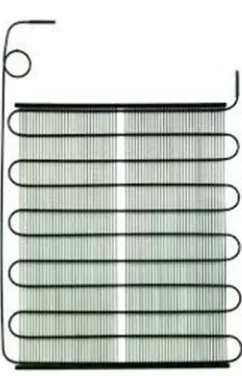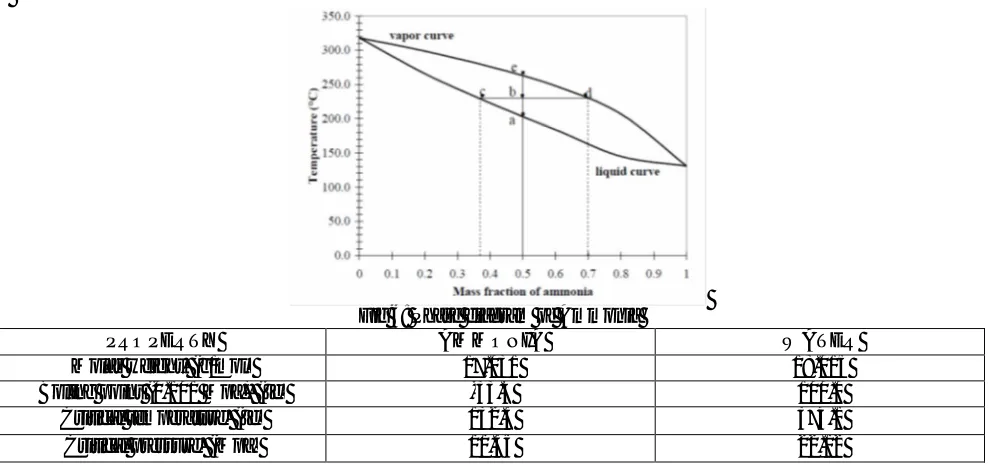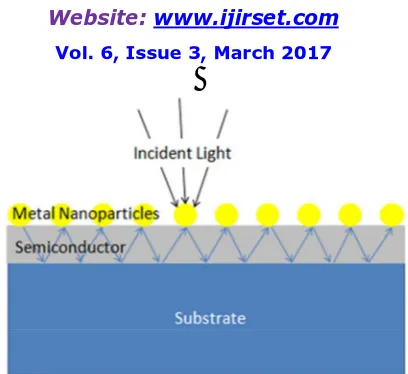Electricity from Solar Rays Using Honeycomb
Lens and Nano-Particled Solar Panels
Uma Shankar S1, Dhanush Narayanan R2, Arun G3, Sivakumar G4
U.G. Student, Department of Mechanical Engineering, Panimalar Engineering College, Poonamallee, Chennai, India1,2,3
Professor, Department of Mechanical Engineering, Panimalar Engineering College, Poonamallee, Chennai, India4
ABSTRACT: In this study, the vapour of liquid ammonia and water mixture is produced by heating with the help of honeycomb lenses which concentrates the solar power. The vapour produced is to run a turbine which runs a generator and produces electricity. The vapour is then cooled down and reused again. In addition to that a nanoparticle present solar panel is used to produce even more electricity.
KEYWORDS: Liquid ammonia mixture, honeycomb lenses, turbine, generator, solar power, nanoparticle, solar panel.
I.INTRODUCTION
The energy demand in the world is expected to increase continuously. The non-renewable resources are depleting and a need for alternate energy is needed, which needs to produce a sufficiently great amount of electricity, which is still in the developmental stage. Therefore one of the alternatives ways is to use renewable energy, which is still present more in quantity. Sun is one of the dominant renewable energy in our world. We know that because of sun rays photosynthesis occurs and plants grow. Then we eat the plants to live a balanced life. Here we are use a converted sunlight energy form for our own energy requirement.
In this research paper, we have a described an efficient way on how to produce electricity using the solar rays. The solar thermal energy is increased by a honeycomb [1] lens and used to produce a vapour of liquid ammonia which runs a turbine-generator and producing current.
II.EXERIMENTALMETHODANDDISCUSSION
Fig 1:Proposed Experimental Setup.
2.1.HONEYCOMB LENSES
Fig 2: Honeycomb lens
2.2.COMPRESSOR
A compressor is used to increase the pressure of vapour by reducing its volume. It has a rotating compressor coupled to a turbine.
Fig 4: Compressor
2.3.TURBO GENERATOR
A turbo generator is the combination of a turbine directly connected to an electric generator for the generation of electric power. Here the vapour pushes the turbine to rotate which produces a rotary motion in turbine also rotating the generator. The generators works based on the principle that whenever a conductor cuts the magnetic field, an emf is induced which will cause the current to flow if the conductor circuit is closed. Thus producing electricity when required.
2.4. COOLING TANK
It consists of a number of parallel pipes which carries the working fluid kept inside the cooling system. The cooling system consists of a mixture of glucose and water, which cools down the heated vapour and it acts like a heat exchanger, thereby condensing the vapour into liquid state.
2.5. WORKING FLUID
The working fluid used here is ammonia water solution (The ratio of ammonia and water is 3:1). The purpose of using a binary mixture as working fluid in a power cycle is to decrease the irreversibilities due to disadvantageous of temperature matching in the heat exchange processes. Binary fluids boil and condense at increasing and decreasing temperatures respectively, while one-component fluids boil and condense at constant temperatures.
The mixture of ammonia and water is non-azeotropic. The characteristic for non-azeotropic mixtures is that the composition and temperature change during boiling for all possible compositions of the mixture. The boiling process for an ammonia water mixture is illustrated in Figure.
Fig 6: Phase diagram of Ammonia
PROPERTY AMMONIA WATER
Molar weight, (g/mol) 17.031 18.015
Boling point (0.101 Mpa), (‘c) -33.4 100.0
Critical temperature, (‘c) 132.3 374.1
Critical pressure, (Mpa) 11.35 22.12
Table 1: Property of Working fluids
2.6 SOLAR PANEL
Here a Plasmonic solar cell[4] is a type of thin film solar cell[5] that converts light into electricity with the assistance
of plasmon .They are typically less than 2 μm thick and theoretically could be as thin as 100 nm. They can use
Fig 7: Plasmonic solar cell
III.CONCLUSION
By this device, more electricity charges, fuel wastage, pollution can be controlled. It will be useful renewable energy. The upcoming generation can produce their own electricity and it avoids the usage of nuclear power and thermal power plant. It is cost efficient and easily available devices which can be used to produce electricity.
IV.FUTURESCOPE
Renewable energy can be produced with low cost. We can change the working fluid and its concentration for further study.
V.ACNOWELDEGEMENT
Thanks to our Secretary & Correspondent Dr. P .Chinnadurai and Principal Dr. K. Mani. We would like to sincerely thank ourH.O.D. Dr. L. Karthikeyan, Department of Mechanical Engineering, Panimalar Engineering College. We appreciate his willingness to share hisknowledge and insight that allowed us to perform our research.
REFERENCES
[1] Zhiguang Li, Xiaoyan Ma, Que Kong, DuyangZang, Xinghua Guan, and XuehongRen ,” Static and Dynamic Hydrophobic Properties of Honeycomb Structured Films via Breath Figure Method”, J. Phys. Chem. C, 2016, 120 (33), pp 18659–18664, 2016 American Chemical Society.
[2] Aldo Steinfeld and Robert Palumbo ,“solar thermochemical process technology’ ENCYCLOPEDIA OF PHYSICAL SCIENCE & TECHNOLOGY R. A. Meyers Ed., Academic Press, Vol. 15, pp. 237-256, 2001.
[3] G. McKerricher, D. Titterington and A. Shamim, "A Fully Inkjet-Printed 3-D Honeycomb-Inspired Patch Antenna," in IEEE Antennas and Wireless Propagation Letters, vol. 15, no. , pp. 544-547, 2016.
[4] S. S. Shivani, J. D. Alfreda, S. Deepa and G. S. Kumar, "A study on increasing the efficiency of the solar cell using nano metals," 2016 3rd International Conference on Electrical Energy Systems (ICEES), Chennai, 2016, pp. 228-231.
[5] P. Müller-Buschbaum , J. S. Gutmann , M. Wolkenhauer , J. Kraus , M. Stamm , D. Smilgies , and W. Petry ,”Solvent induce surface morphology of thin polymer films “Macromolecules, 2001, 34 (5), pp 1369–1375.
[6] D.Dilip Kumar, R.EdwinManoj and Dr.G.Siva Kumar,” Super-efficient solar panels with nano antennas “IJSRD - International Journal for Scientific Research & Development| Vol. 3, Issue 07, 2015.
BIOGRAPHY
UMA SHANKAR S
I am pursuing my B.E(Mechanical Engineering) in Panimalar Engineering College.I am a critical thinker and hardworker.I would like to build the best aerodynamic car which is useful for future generation automobiles.
DHANUSH NARAYANAN R
Iam pursuing my B.E(Mechanical Engineering) in Panimalr Engineering College.I have a innovative thinking on the working of Turbines and thoughts looking deep into it for the betterment in future.
ARUN G
I am pursuing my B.E(Mechanical Engineering) in Panimalar Engineering College . My interest is to do a lot of thermal related projects and to control the heat flow anywhere in the machine.
Dr. Siva Kumar. G



